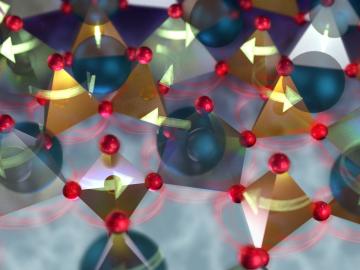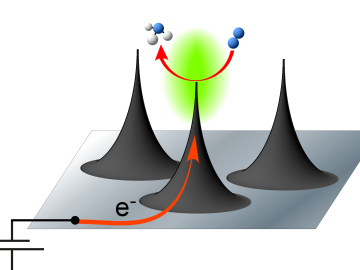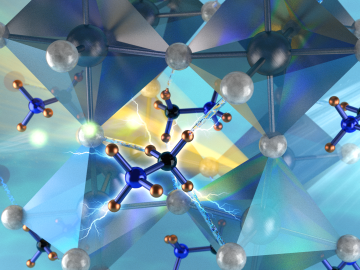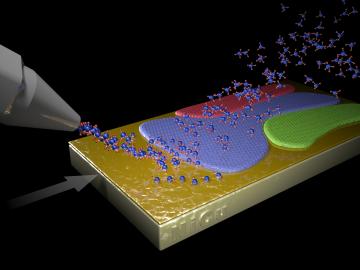Filter News
Area of Research
- (-) Materials (45)
- Advanced Manufacturing (2)
- Biological Systems (1)
- Biology and Environment (13)
- Clean Energy (32)
- Climate and Environmental Systems (1)
- Computational Biology (1)
- Energy Frontier Research Centers (1)
- Fuel Cycle Science and Technology (1)
- Fusion and Fission (8)
- Isotopes (1)
- Materials for Computing (3)
- National Security (8)
- Neutron Science (20)
- Nuclear Science and Technology (6)
- Nuclear Systems Modeling, Simulation and Validation (1)
- Sensors and Controls (1)
- Supercomputing (24)
News Topics
- 3-D Printing/Advanced Manufacturing (4)
- Advanced Reactors (1)
- Artificial Intelligence (3)
- Bioenergy (3)
- Biology (3)
- Biomedical (2)
- Buildings (1)
- Chemical Sciences (9)
- Composites (1)
- Computer Science (2)
- Coronavirus (1)
- Critical Materials (1)
- Cybersecurity (1)
- Decarbonization (1)
- Energy Storage (11)
- Environment (2)
- Exascale Computing (1)
- Frontier (1)
- Fusion (1)
- Grid (1)
- High-Performance Computing (2)
- Isotopes (2)
- Machine Learning (1)
- Materials (12)
- Materials Science (5)
- Microscopy (3)
- Nanotechnology (5)
- National Security (2)
- Neutron Science (5)
- Nuclear Energy (1)
- Partnerships (4)
- Physics (6)
- Polymers (2)
- Quantum Science (1)
- Security (1)
- Sustainable Energy (1)
- Transformational Challenge Reactor (1)
- Transportation (2)
Media Contacts

Researchers at the Department of Energy’s Oak Ridge National Laboratory made the first observations of waves of atomic rearrangements, known as phasons, propagating supersonically through a vibrating crystal lattice—a discovery that may dramatically improve heat transp...

The search for a more energy efficient and environmentally friendly method of ammonia production for fertilizer has led to the discovery of a new type of catalytic reaction.
Researchers at the Department of Energy’s Oak Ridge National Laboratory used nanoscale spike...

Neutron scattering has revealed, in real time, the fundamental mechanisms behind the conversion of sunlight into energy in hybrid perovskite materials. A better understanding of this behavior will enable manufacturers to design solar cells with increased efficiency...

A scientific team led by the Department of Energy’s Oak Ridge National Laboratory has found a new way to take the local temperature of a material from an area about a billionth of a meter wide, or approximately 100,000 times thinner than a human hair. This discove...

A new method to produce large, monolayer single-crystal-like graphene films more than a foot long relies on harnessing a “survival of the fittest” competition among crystals. The novel technique, developed by a team led by Oak Ridge National Laboratory, may open new opportunities for growing the high-quality two-dimensional materials necessary for long-awaited practical applications.




